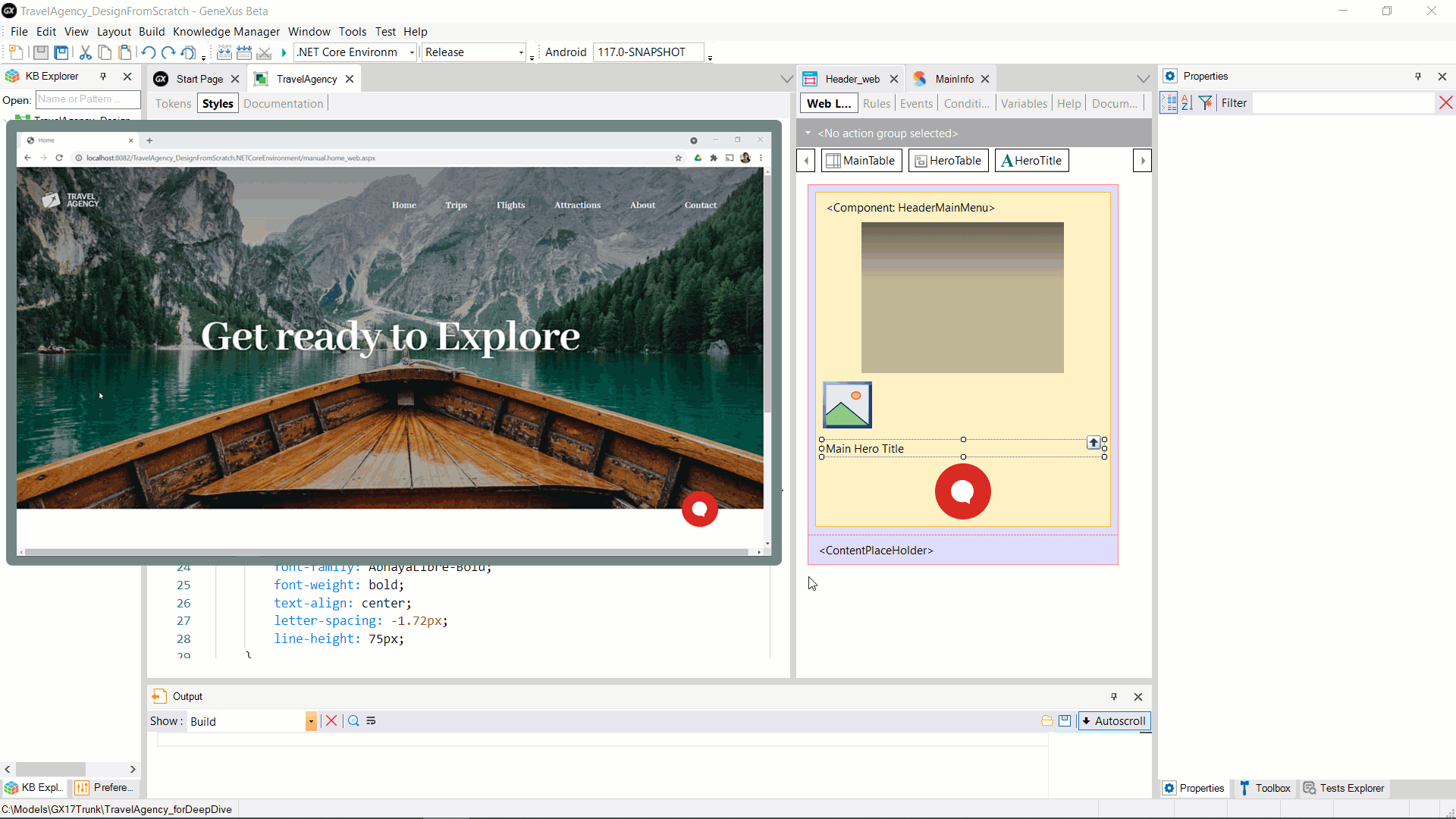Styles are a way of representing the design decisions made for a system. Together with Tokens, they make up an essential part of Design Systems.
As you may know, each control in a layout can be associated with one Design System Class (or several). The class is precisely what determines the style that this control will have at runtime (color, background color, font, size, etc.).
Within the Design System Object (DSO), styles are defined in the corresponding 'Styles' section. Basically, this section will declaratively define the style for each class in the system.
In the following example, style settings were applied to four classes used by some Text Blocks (in addition to the Form class, to specify the background color of the screens):

A style sheet within the Design System object has a structure and format very similar to CSS, even when it is to be used for native applications. In fact, writing any CSS pseudo-element or pseudo-class is supported.
Simply put:
styles <StyleSetName>
'{'
ListOfRulesAndClassDeclarations
'}'
View Design System Syntax conventions
Where:
StyleSetName
Name given by the developer to the set of declarations it contains. Currently, only one set of style declarations can be defined in a DSO, but more may be available in the future.
ListOfRulesAndClassDeclarations
List with the style declaration of each class. It may also include rules to do other things, such as import another DSO, incorporate a non-standard font family, vary the definition of a class by screen size, and/or include the definitions of one class in another.
The syntax of this list is as follows:
styles <StyleSetName>
'{'
[import_declaration]
[font_declaration]
[media_condition
'{'
[class_declaration1 …]
'}']
[class_declaration2 …]
'}'
View Syntax conventions
Where:
import_declaration
It is a declaration that imports and uses definitions made in Design System Object, Design System Tokens, Design System Styles and External CSS.
font_declaration
It is a declaration that defines a font family other than the default ones for Tokens and Styles of the Design System Object.
media_condition
It is a condition that creates media in your Design System Object.
class_declaration1, ... class_declarationN
Set of design characteristics that you want one or more controls to adopt.
Note: Only the
Import rule must go at the beginning. The order of the other declarations and conditions is not relevant.
The most simple way to define the style characteristics of each class is to select the class with a period, followed by the class name without spaces, and then, between curly brackets, specify all the desired characteristics through properties.
.<class_name>
'{'
{
<property_name1> : <value1>;
<property_name2> : <value2>;
...
}
'}'
Some properties are valid for rendering both Web Panel and Panel object controls, but others are specific to each one.
In addition, unlike CSS, in the DSO styles language, the values assigned to properties can be replaced with references to tokens defined in the Tokens section (or imported from other DSOs).
In the following example, references to color, font size, and font family tokens are used for the first 3 properties, while for the last 2 the values are used directly:
.H2
{
color: $colors.OnSurface;
font-size: $fontSizes.H2;
font-family: $fonts.Title1;
font-weight: bold;
letter-spacing: -2px;
}
Here you can see an overview of Design System Classes writing styles according to tokenization.
The units of measurement px and dip are converted (1 to 1 equivalence) to allow using the same Design System Object or an extension of it in both types of applications (those using Web Panels and those using Panels).
Read more at Design System Class.
There’s a set of rules (beginning with the at sign) that you can use for structuring styles. Among other things, they let you compose classes, import tokens or styles (or both) from other Design System objects, vary the style of a class according to screen size, etc.
Read more at Design System Style Rules.
All the classes declared in this part can be added as classes in the object controls (just as Classes of a Theme) and also be used in other Design System objects where this section (Styles) or the entire object are imported.
It is also possible to modify the class or classes associated with a control dynamically, through the control's Class property:
control_name.class = styleClass:class_name
To see more specifically how classes are applied to a control to be rendered at runtime in the output, read Rendering precedences for controls with Design System Object.
Since GeneXus 17 Upgrade 6.